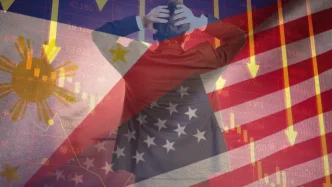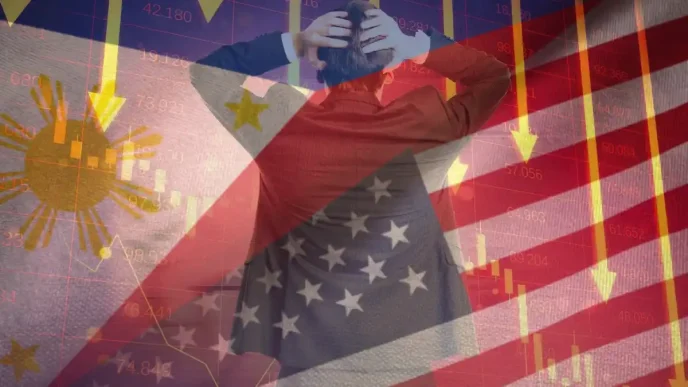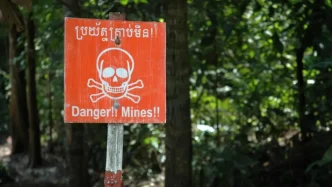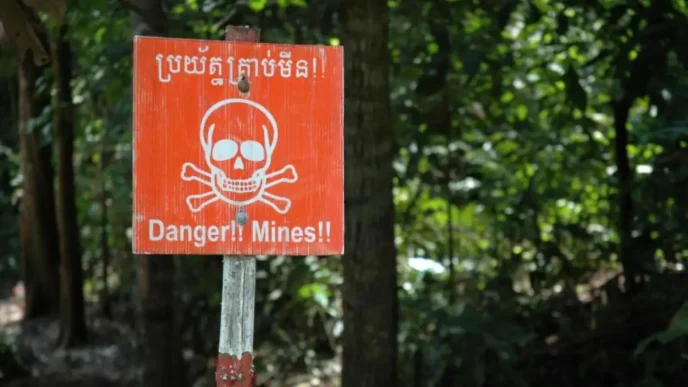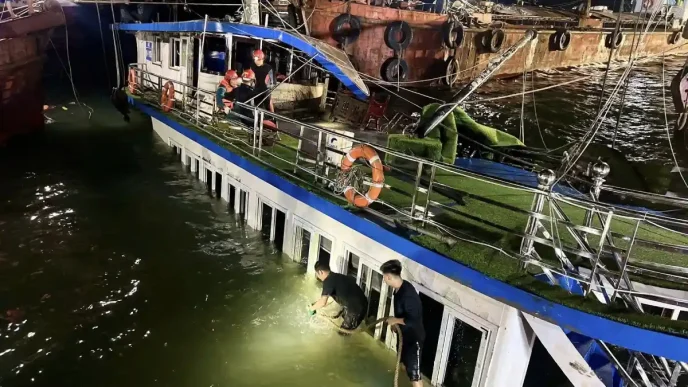Jakarta witnessed a significant step forward in regional diplomacy as Indonesia’s President Prabowo Subianto and Vietnam’s Communist Party General Secretary To Lam shook hands following a joint press conference at the Presidential Palace on March 10, 2025. This public display of camaraderie underscored a deeper achievement: the ongoing efforts to ratify a landmark maritime boundary agreement in the South China Sea, signed on December 22, 2022, after over a decade of negotiations. For two of Southeast Asia’s most influential nations, this agreement signals not only a commitment to resolving longstanding border tensions but also a potential model for dispute resolution in a geopolitically fraught region.
A Historic Accord in the South China Sea
The Indonesia-Vietnam Maritime Boundary Agreement, focusing on the exclusive economic zone (EEZ) water columns rather than the seabed, marks a historic milestone. It is the second such agreement between the two nations, following a 2003 accord that delineated seabed boundaries after nearly three decades of dialogue. The latest pact, finalized after 12 years of talks starting in 2010, addresses a critical gap by clarifying rights and responsibilities over the water columns—a vital aspect for fishing, resource exploration, and maritime security in the South China Sea.
This agreement holds particular significance given the broader context of territorial disputes in the region, where overlapping claims, including China’s expansive nine-dash line, have fueled tensions for decades. While the 2022 agreement does not resolve all conflicts in the South China Sea, it stands as a testament to the power of bilateral negotiations between ASEAN neighbors. As reported by AFP, the agreement reinforces both nations’ rejection of claims that contravene international maritime law, subtly addressing external pressures without direct confrontation.
From Negotiation to Ratification: The Road Ahead
The journey from signing to implementation remains complex. On April 23, 2025, Indonesia’s House of Representatives Commission I convened in Yogyakarta to discuss the ratification process, inviting academics and experts to weigh in on the agreement’s implications. Ratification is a crucial next step for the agreement to become legally binding under national laws in both countries. While the process may be time-consuming, experts argue that swift action is essential to cement the progress made and prevent backsliding amid regional uncertainties.
Beyond ratification, practical challenges loom. Both nations must establish coordinated law enforcement mechanisms to monitor and protect their newly defined maritime boundaries. This includes addressing potential violations by fishing vessels or other actors in the EEZ, ensuring that each country respects the other’s jurisdiction while maintaining open channels for dialogue. Technical aspects, such as aligning charts, geodetic data, and coordinate systems, also require meticulous attention to ensure effective implementation on the ground—or rather, at sea.
Implications for Resource Management and Regional Stability
The agreement’s immediate impact lies in its clarity over resource management. By delineating the EEZ, Indonesia and Vietnam can now regulate fishing and potential energy exploration within their respective zones without the ambiguity that previously risked conflict. For Indonesia, this marks the first maritime boundary agreement under the Jokowi administration, aligning with its vision of becoming a “global maritime fulcrum”—a strategic pivot in international shipping and resource corridors. For Vietnam, under the leadership of the Communist Party of Vietnam (CPV), the agreement reinforces its commitment to safeguarding national interests through diplomacy.
Moreover, the accord sends a broader message to the region. It demonstrates that even in a contested area like the South China Sea, disputes can be settled peacefully through sustained negotiation. While it does not directly address China’s claims, it implicitly challenges narratives of inevitable conflict by prioritizing bilateral solutions over multilateral deadlock. If ratified, this could inspire other ASEAN nations to pursue similar agreements, potentially reducing flashpoints in one of the world’s most strategically vital waterways.
Public Awareness and Education: Bridging the Knowledge Gap
One often-overlooked aspect of such agreements is the need for public education, particularly in border regions where local communities directly interact with maritime boundaries. Fishermen and coastal residents, who may have operated in previously undefined areas, must now adapt to new legal realities. Both governments, in collaboration with educational institutions, face the task of disseminating information about the agreement’s terms and implications. This is not merely a bureaucratic exercise but a critical step to ensure compliance and prevent unintended violations that could strain bilateral ties.
In Indonesia, for instance, universities like Gadjah Mada in Yogyakarta, known for expertise in geospatial and maritime law, could play a pivotal role in outreach programs. Similarly, Vietnam’s state-led initiatives could leverage local authorities to communicate changes to communities in coastal provinces. Without such efforts, the agreement risks remaining an abstract policy, disconnected from the lived realities of those most affected by it.
Geopolitical Context: A Subtle Stand Against Broader Claims
The 2022 agreement builds on the foundation laid by the 2003 accord, which connected seabed boundaries with Malaysia, creating a cohesive framework among Indonesia, Vietnam, and their neighbors. Notably, the earlier agreement clarified seabed ownership without disputes among the trio, setting a precedent for the current EEZ focus. However, questions remain about whether the 2022 EEZ boundary aligns geographically with the 2003 continental shelf line. If the lines diverge, as some experts suggest, this could complicate future resource claims or negotiations over overlapping interests—an issue that may require further clarification post-ratification.
In a wider geopolitical lens, the agreement subtly counters expansive territorial assertions in the South China Sea. While neither Jakarta nor Hanoi has explicitly named external actors during public discussions, the timing and emphasis on sovereign rights over EEZs speak volumes. As President Prabowo Subianto reiterated during the March 2025 press conference, mutual respect and adherence to international norms are non-negotiable for Indonesia. Vietnam’s General Secretary To Lam echoed similar sentiments, emphasizing Hanoi’s dedication to regional stability through lawful means.
Economic Dimensions: Beyond Borders to Bilateral Growth
Indonesia and Vietnam, often described as economic giants of Southeast Asia, stand to gain significantly from this agreement beyond mere border clarity. The South China Sea is a critical artery for global trade, with trillions of dollars in goods passing through annually. Secure and defined maritime zones reduce risks for investors and shipping companies, fostering economic confidence. For local industries, particularly fisheries, the agreement provides a framework to sustainably manage resources worth millions—though exact figures depend on post-ratification assessments.
Take, for instance, the potential for joint ventures in aquaculture or energy exploration. With boundaries set, both nations can explore collaborative projects without the specter of jurisdictional disputes. While no specific financial commitments have been announced, the groundwork laid by this agreement could translate into tangible economic benefits, potentially involving investments in the range of billions of Vietnamese Dong or Indonesian Rupiah—figures that would be clearer once converted to USD based on prevailing exchange rates at the time of implementation.
Challenges and Uncertainties on the Horizon
Despite the optimism, hurdles remain. Ratification processes in both countries are subject to domestic political dynamics, which could delay or complicate adoption. In Indonesia, legislative debates may face scrutiny from nationalist factions wary of perceived concessions, even if the agreement is balanced. In Vietnam, the CPV’s centralized decision-making might expedite ratification, but aligning local enforcement with national policy could pose logistical challenges.
Additionally, the agreement’s limited scope—focusing solely on EEZ water columns—leaves unresolved questions about future continental shelf negotiations or overlapping claims with other nations. While it sets a positive precedent, it is not a panacea for all maritime disputes in the region. Analysts also caution that external actors may test the resolve of both nations by increasing naval presence or resource activities near the newly defined boundaries, necessitating robust diplomatic and military coordination.
A Model for ASEAN and Beyond
As Indonesia and Vietnam move toward ratification, their agreement offers a glimmer of hope in a region often defined by conflict over cooperation. It underscores the value of patience—12 years of negotiations in this case—and the importance of prioritizing bilateral trust over external pressures. For ASEAN, which often struggles with unity on South China Sea issues, this could serve as a blueprint for other member states to resolve overlapping claims, whether with each other or with external powers.
The handshake between President Prabowo and General Secretary To Lam in Jakarta was more than a photo opportunity; it was a symbol of what’s possible when dialogue prevails. As the ratification process unfolds, the region watches closely, hoping this historic accord will inspire a new chapter of stability and collaboration in the South China Sea.



